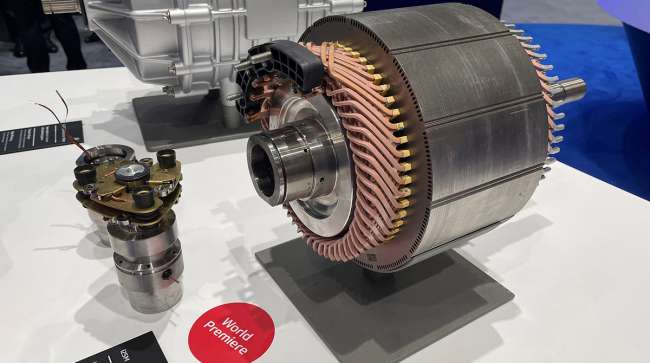Managing Editor, Features and Multimedia
ZF Develops EV Motor That Cuts Out Rare Earth Materials

[Stay on top of transportation news: Get TTNews in your inbox.]
MUNICH — Automotive supplier ZF Group announced it has developed an electric vehicle motor that eliminates the need for rare earth materials without sacrificing performance.
ZF said it plans to commercialize its I2SM electric motor technology, which stands for in-rotor inductive-excited synchronous motor, in both the commercial vehicle and passenger car markets.
In contrast to the motors most frequently used in electric vehicles today, the I2SM does not require magnets, which incorporate rare earth materials in their production.
By eliminating the need for mining and processing those materials, the I2SM reduces the electric motor’s carbon footprint from production by up to 50% while also reducing supply chain challenges, the company said.
#ZF makes a magnet-free #ElectricMotor that is uniquely compact and competitive.https://t.co/LUB7jcxdRb#ElectricMobility pic.twitter.com/n6d7LyDKLU — ZF Group (@ZF_Group) September 1, 2023
Nonetheless, ZF said the I2SM’s performance data is “on par” with magnet-based electric motors.
Martin Fischer, ZF’s board member for North America, discussed the new technology at a Sept. 4 roundtable with industry press at the IAA transportation show.
“That motor is the same size as a magnet motor, and out of that same size you get the same performance,” he said. “That’s really a big step forward.”
From a broader perspective, Fischer noted the speed of technology advancements from one generation of electric vehicles to the next.
“When you think about vehicles on the road today, it’s basically 400-volt silicon technology,” he said. “The vast majority of the established market is now transitioning to 800-volt technology for better efficiency, and silicon carbide technology.”
Getting an early look at the latest developments in transportation technology at #IAA23 in Munich. pic.twitter.com/5nwNiCooks — Seth Clevenger (@SethClevenger) September 4, 2023
Moving forward, ZF plans to refine its I2SM technology for production and offer it as an option within its own e-drive platform.
Manufacturers of commercial vehicles and passenger cars will then be able to select a variant with 800-volt or 400-volt architecture.
Want more news? Listen to today's daily briefing below or go here for more info:


